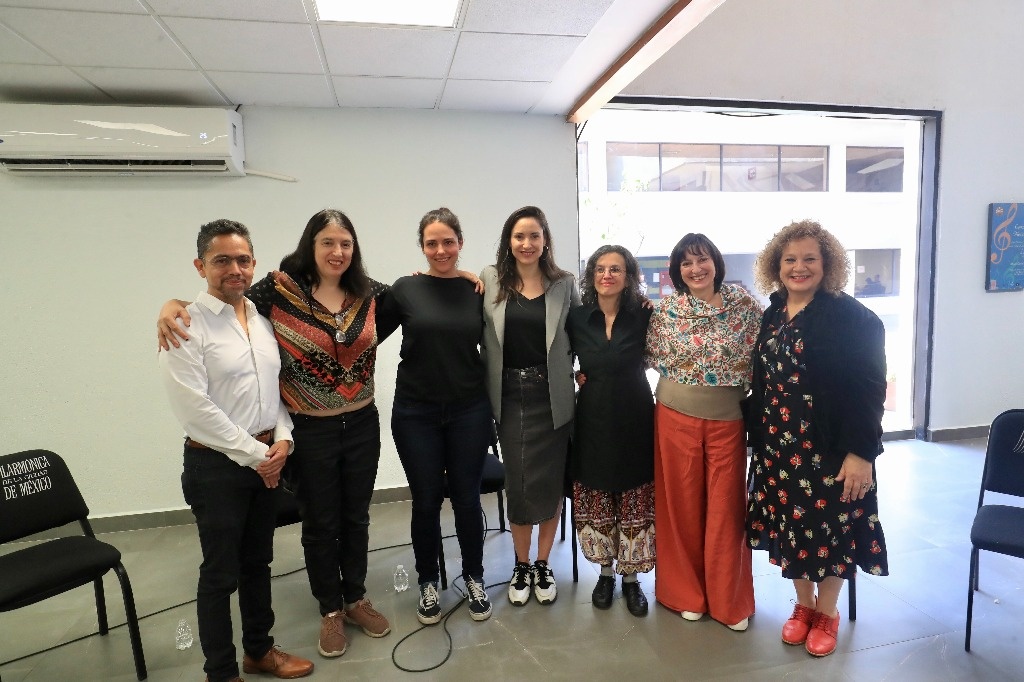The presence of women in the history of composition in Mexico is practically unknown, regardless of the fact that the first national composer to obtain her professional title, the pianist Guadalupe Olmedo (1854-1889), did so in the 1980s. of the 19th century.
So, we have an extremely early composer, who has begun to be rescued; but, from then on, there are many women whose names we do not know. That is why we must make them visible, because, when music history is taught in Mexico, very few women are mentioned, and not because there are none, but because it is more difficult to find them.
explained musicologist Yael Bitrán.
The researcher made this point regarding the recent recording by the Mexico City Philharmonic Orchestra (OFCM) with music by five contemporary Mexican composers: Marcela Rodríguez, Hilda Paredes, Ana Lara, Georgina Derbez and Andrea Chamizo.
Of the first, it included Triptych; of the second, I will remember; of the third, When the silence falls; of the fourth, From the darkness the light, and of the last, It’s still sand. All of these pieces will be part of the orchestra’s programming throughout the year.
This new phonogram will appear between July and August, along with the album made last December with music by Dmitri Shostakovich, with which the group broke an 18-year drought of not recording, said Claudia Curiel de Icaza, head of the Secretariat of Culture of Mexico City.
The ideal is for (the project) to continue growing, for it to be volume one, and, of course, for more women to be invited.
added the official, who regretted that Mexican composers are not valued in the country, unlike other nations, where their work is programmed and recorded on a regular basis.
It seemed very important to us that there be a phonogram dedicated to them, and that it would open the concern to other orchestras so that they also continue working in this line.
, he added; He specified that with this album he seeks make the work of female composers visible, because they have not had the opportunity or the same support as men
.
Curiel de Icaza explained that the selection of the authors and works was carried out by the artistic and advisory councils of the OFCM. He highlighted that the publication of both recording materials will allow the level of the capital group to be shown and for it to be located on the same platforms where the most important orchestras in the world are.
Yael Bitrán, responsible for the curation and research of this album, celebrated that the project is taking place at this time, which, she noted, is very important in terms of the visibility that women are having in Mexico in all areas: the knowledge, science, arts, humanities, politics…
It is never too late, but music is a little late in terms of making women visible, especially composers, who have done absolutely remarkable work in recent decades. In the 19th century, they were perhaps confined to the composition of chamber music, for piano or for piano and singing, and in the 20th century, especially in the second half, they already ventured into all areas, and are now great authors. orchestral, opera, of all formats and in all genres
he stressed.
“Although making an album only about women might seem somewhat exclusive, deep down it is an act of equality and a way to make visible what has been hidden. There has been a deficit in programming works by women. So, you have to make an additional effort, and recording this album is also about generating a resource; That is, leaving these works recorded so that they remain as a way to inspire new composers.
Something that feminism has said is that in order for them to advance, they need a genealogy of women to draw inspiration from.
Belonging to different generations, Hilda Paredes, Ana Lara, Georgina Derbez and Andrea Chamizo described this recording as unprecedented, historic event
for the music and culture of Mexico.
Not only because it was the first phonogram dedicated to female composers in the country and in many others, said Ana Lara, but because the participants We reflect that women’s music has an incredible variety and that we can put aside that question that we are always asked: whether we compose as men or as women. You can judge for yourselves
.
For the operational director of the OFCM, José María Serralde, this album marks a different philosophy
in the group. Not only because after many years – it is not known how many – it was recorded again in the Silvestre Revueltas room, headquarters of the orchestra, but because these two recordings have been produced with part of the group’s annual budget.
He highlighted that that make different
It also includes the management of the rights of both phonograms; that is, the royalties, which for the first time
will remain in the hands of the authors and the local Ministry of Culture, since the rights to the albums produced by the orchestra in the past, such as those directed by Fernando Lozano and Enrique Bátiz, are in someone else’s hands
: at the record labels.
This cannot happen, that is why it is necessary to do things differently. It is a paradigm that must be broken
stated the musician, who clarified that the recording of this new material, like the previous one, was in charge of engineer Erdo Groot, one of the founding legends
from Phillips Classics, which has more than 660 albums of concert and symphonic music to its credit.
#OFCM #records #album #order #Mexican #female #composers #visible
– 2024-05-07 02:24:56
